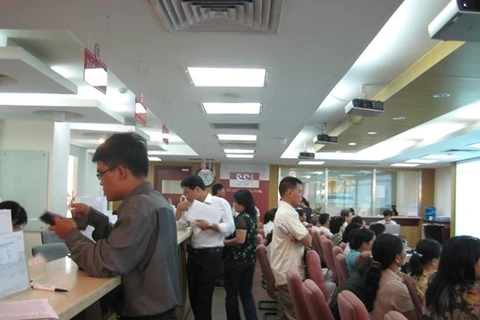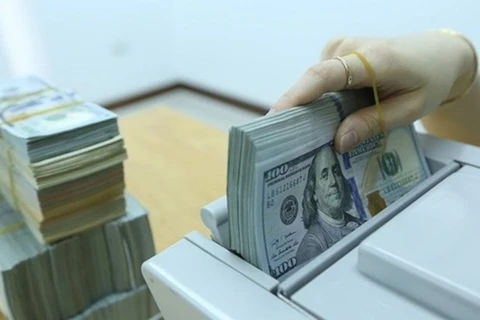 Banks have taken many policies, including offering free money transfers and investing in digital technology to attract customers. (Photo: cafef.vn)
Banks have taken many policies, including offering free money transfers and investing in digital technology to attract customers. (Photo: cafef.vn) Demand deposits have very low interest rates of only 0.1 percent per year. Therefore, banks will have low input capital costs and ease to increase their NIM ratio if they have high current account savings account (CASA) ratio – or the proportion of demand deposits out of total deposits.
Besides, CASA also reflects customers' belief and assessment of banks’ service quality, especially payment services. Therefore, increasing CASA has become extremely important in retail banking strategy and many banks consider it one of the top targets in recent years.
Before 2018, Vietcombank and MBBank were the two banks with the largest proportion of CASA in the banking system. While Vietcombank had an advantage in luring demand deposits through transactions of State-owned agencies and enterprises, MBBank benefited from defence agencies and enterprises.
However, in the past two years, Techcombank has risen to the top and is increasingly outstripping the two banks. According to Techcombank's financial statements, its demand deposits in 2020 increased by 60.6 percent to 128 trillion VND (5.56 billion USD). The bank’s CASA ratio by the end of 2020 reached 46.1 percent, a sharp increase from 34.5 percent at the end of 2019 and also higher than Vietcombank (about 33 percent) and MB (about 37 percent).
Techcombank has so far had an ambitious target to increase its CASA ratio to 55 percent by 2025.
Besides Techcombank, many other private banks, such as TPBank and VPBank, also posted impressive CASA growth last year.
At VPBank, demand deposits increased by 28 percent to more than 35.4 trillion VND, helping the bank increase its CASA rate from 13.2 percent to 15.6 percent. TPBank's demand deposits increased by 48 percent last year to more than 21.2 trillion VND, pushing the bank’s CASA rate up from 16.5 percent to 19.4 percent.
To increase CASA, banks have taken many policies, including offering free money transfers and investing in digital technology to attract customers.
Techcombank can be considered the first private bank to initiate this wave when it focused on building advantages in payment. Since 2016, this bank has implemented many promotion programmes for customers such as free of charge e-banking transactions and account management.
Following suit, many other private banks have also entered the race of providing free service. VIB has introduced a policy of free of charge money transfers and withdrawals for new customers or payment accounts with an average balance of at least 5 million VND. Customers transferring money online via TPBank also received the free service policy.
The increasingly fierce competition in the race to lure demand deposits has forced Vietcombank and MBBank to take action.
Vietcombank has recently announced integrated transaction account packages that cover account services, digital banking and debit cards, helping customers transfer money free of charge on VCB Digibank.
Meanwhile, besides implementing a series of digital products, MBBank has implemented a programme to open accounts with lucky numbers at the request of customers in the past year. In 2020, the bank also offered free money transfer service on MBBank app. As a result, the bank's CASA also increased significantly from 34 percent in 2019 to 37 percent in 2020./.
VNA























